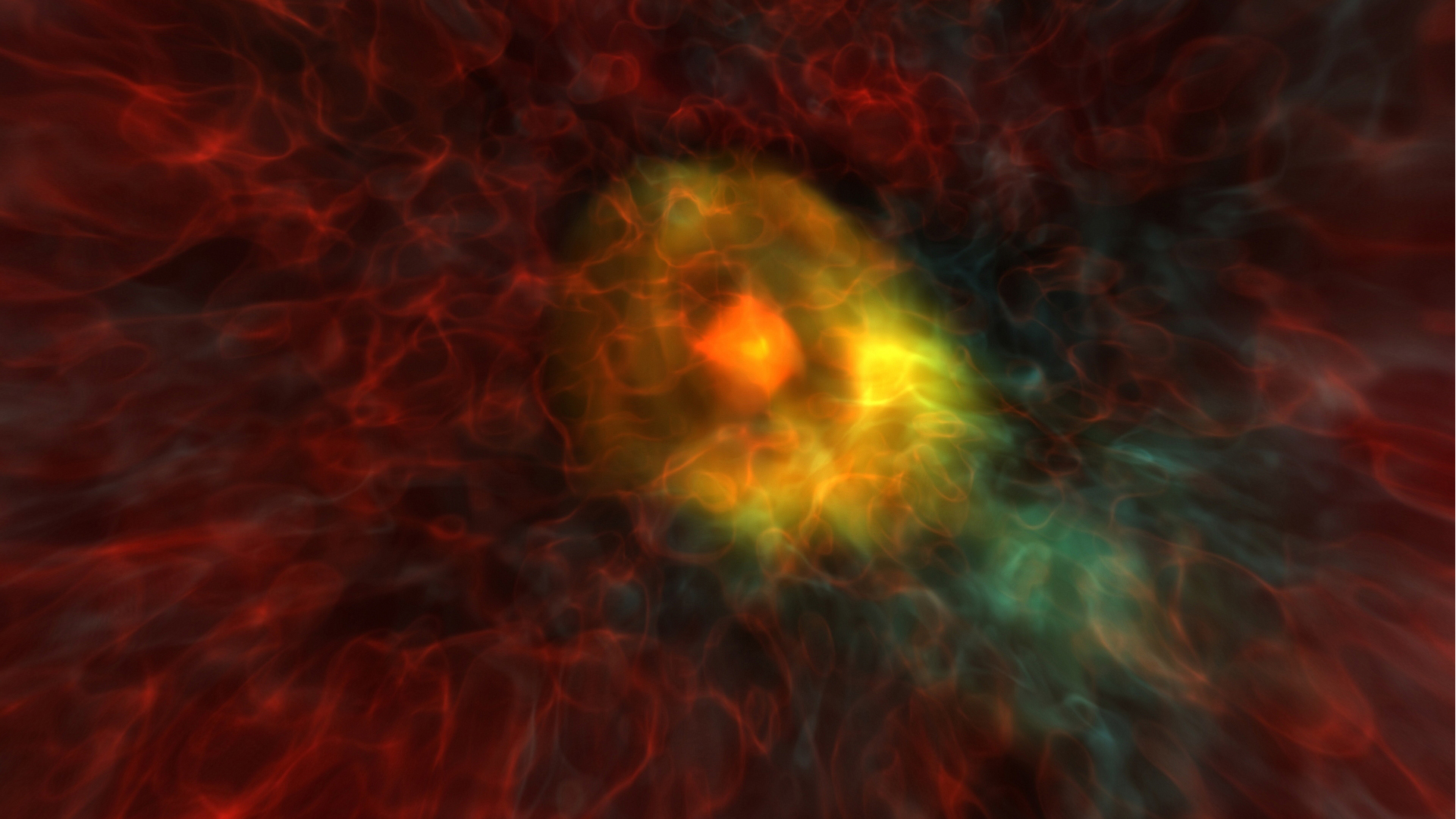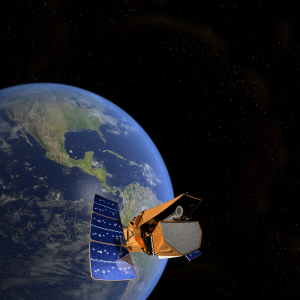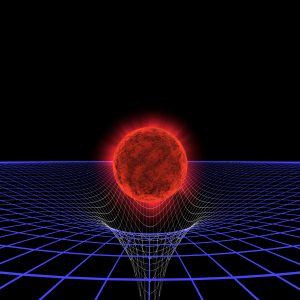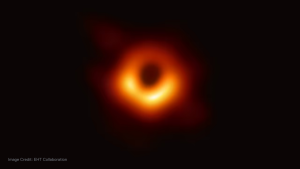
Black holes are some of the most mysterious objects in space. Our new Frost Planetarium show, Black Holes: The Other Side of Infinity, explores the science of these fascinating phenomena. Black Holes, narrated by Liam Neeson, joins the perpetual guest favorite Dynamic Earth (also Neeson-narrated) in our Frost Planetarium lineup beginning May 1.
Black Holes opens with the launch of the SWIFT telescope from Cape Canaveral in 2004. SWIFT’s mission was to look for the eruption of gamma rays signifying the death of a large star – the birth of a black hole. As with nearly all celestial events, the forces of gravity are key in creating black holes.
Albert Einstein was the first scientist to make the connection between gravity and black holes. In his theory of relativity, he put forth the idea of space as a bendable, four-dimensional object called “space-time.” Gravity, he proposed, was the warping of that bendable object by massive celestial bodies. Imagine a 2D universe (from our 3D one), represented by a blanket stretched from its four corners, then placing a bowling ball in the middle: that is a model for Einstein’s concept for how gravity shapes space-time. Black holes, then, are punctures in the fabric of space-time created by gravity’s outsized pull.


Since Einstein, many brilliant astronomers, physicists and mathematicians have puzzled over the existence of black holes. Black Holes introduces us to one of them, Dr. Andrea Gehz, whose work focuses on our very own Milky Way galaxy using the giant Keck Telescope in Hawai’i. Ghez studies the movement of stars in the Milky Way’s center. At the time of filming, she had zeroed in on a bright, compact object there called Sagittarius A*. Her team measured the object’s size, discovering it was almost four million times the mass of our Sun, in a very small volume of space—verifying that Sagittarius A* is a supermassive black hole. Ghez has since won a 2020 Nobel Prize in Physics for her work.
Black Holes doesn’t solve every mystery of behind black holes; there is still a lot we don’t know about them, and much of what we do know is built on powerful computer simulations and a handful of difficult observations. What lies on the other side of a black hole, and will we ever be able to see beyond these holes in space-time? We don’t know yet. But we can promise if you come see this action-packed 25-minute Frost Planetarium show, you’ll leave filled with curiosity in these mysterious objects.

Black Holes: The Other Side of Infinity contains flashing and fast-moving animations that may not be comfortable for all viewers.
Black Holes: The Other Side of Infinity is made possible through funding by the National Science Foundation and NASA, and is a collaboration of the Denver Museum of Nature & Science, the National Center for Supercomputing Applications, Spitz, Inc., and the Swift and GLAST Education and Public Outreach Programs at Sonoma State University. “Black Hole Flight Simulator” by Dr. Andrew J.S. Hamilton, © University of Colorado.